From Nov. 8, 2025 to Feb. 22, 2026, Brescia ’s Museo di Santa Giulia is hosting Material for an Exhibition. Stories, Memories and Struggles from Palestine and the Mediterranean, an exhibition curated by Sara Alberani that ideally reconstructs the art space of the Eltiqa Group for Contemporary Art collective, destroyed in the bombing of Gaza in 2023. Promoted by the Municipality of Brescia and the Brescia Musei Foundation, under the patronage of Amnesty Italy, the exhibition is one of the central events of the eighth edition of the Peace Festival. The project was created as a response to the destruction of Eltiqa, a symbolic place for Palestinian contemporary art founded in 2002 and a reference point for Gaza artists. Two of its founders, Mohammed Al-Hawajri (1976) and Dina Mattar (1985), are among the exhibition’s protagonists along with Lebanese artist Haig Aivazian (1980) and Palestinian artist Emily Jacir (1970), a Golden Lion winner at the 2007 Venice Biennale. Their works, coming from areas marked by war, exile and fragmentation, meet in Brescia to return a collective testimony on cultural resistance and art’s ability to create links between different Mediterranean geographies.
“Exhibiting at the Museum of Santa Giulia the works of Eltiqa Group for Contemporary Art that survived the destruction and proposing to Mohammed Al-Hawajri and Dina Mattar an artistic residency in our city,” says Laura Castelletti, Mayor of Brescia, "means recognizing that art is testimony, the building of bonds, a tool for mutual knowledge. Thanks to their works and those of Haig Aivazian and Emily Jacir we can understand how creative expression is a space of resilience even in the most dramatic contexts. Material for an Exhibition invites us to look beyond simplified narratives to encounter the stories and lives of those who live conflict on a daily basis, reminding us that culture is always a bridge between different worlds and that this is precisely why we can and must, as cities but also individuals, act to safeguard and protect the cultural heritage of all communities, as a precious legacy that unites humanity transcending geographic and temporal boundaries. The exhibition represents a pivotal moment of the Peace Festival and testifies to the great quality of our museum system, which is capable of proposing initiatives with an international profile, putting itself at the service of an idea of art as a promotion of peace, respect among people and the discovery of new cultural horizons."
The title of the exhibition pays homage to Emily Jacir’s work Material for a Film, dedicated to the memory of Palestinian poet Wael Zuaiter. Material becomes a key word here: it indicates both the variety of languages in the exhibition-installations, video, drawings, painting, photography-and the concrete and fragile dimension in which many artists operate, amid loss of archives, destruction of works and erasure of places of memory. In Palestine, the archive itself is now a tool of survival, a way to affirm the existence of a threatened history. The exhibition opens with works by Mohammed Al-Hawajri and Dina Mattar, who with Eltiqa have promoted the growth of contemporary art in Gaza for two decades. After the bombing in 2023, the two artists managed to save some works, now kept between Sharjah and Dubai, and presented for the first time in Europe.
The rescued works arrive in Brescia as evidence of a legacy that resists destruction. The museum thus becomes a place of symbolic reconstruction; Eltiqa is temporarily reborn in its spaces. Mohammed Al-Hawajri investigates in his works the relationship between historical memory and Palestinian daily life. His canvases, characterized by irony and paradox, transform images of war into visual narratives that mix pain and imagination. Series such as The Animal Farm (2011) or Maryam (2015) weave symbols of resistance and cultural references, with human and animal figures becoming witnesses of survival.
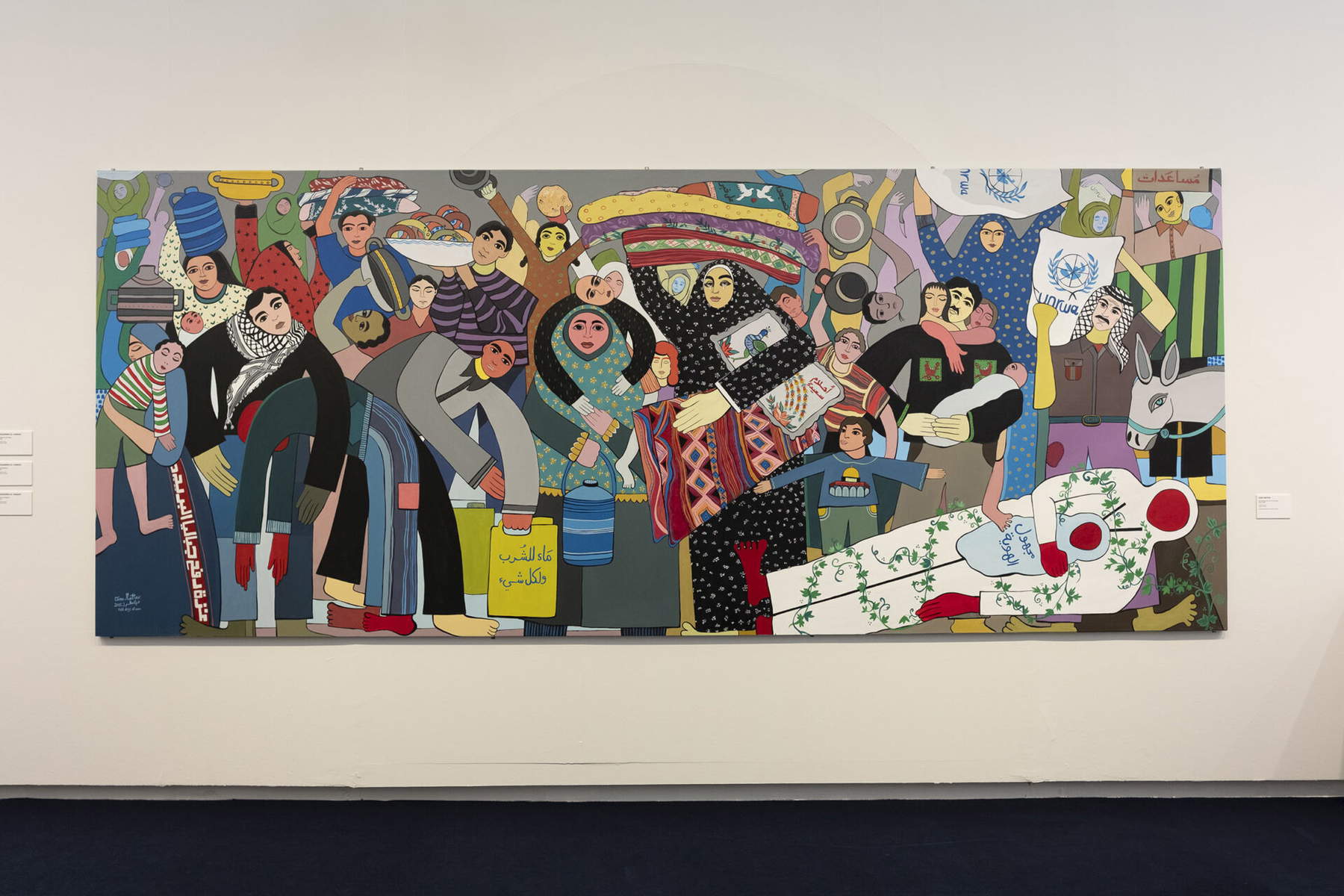
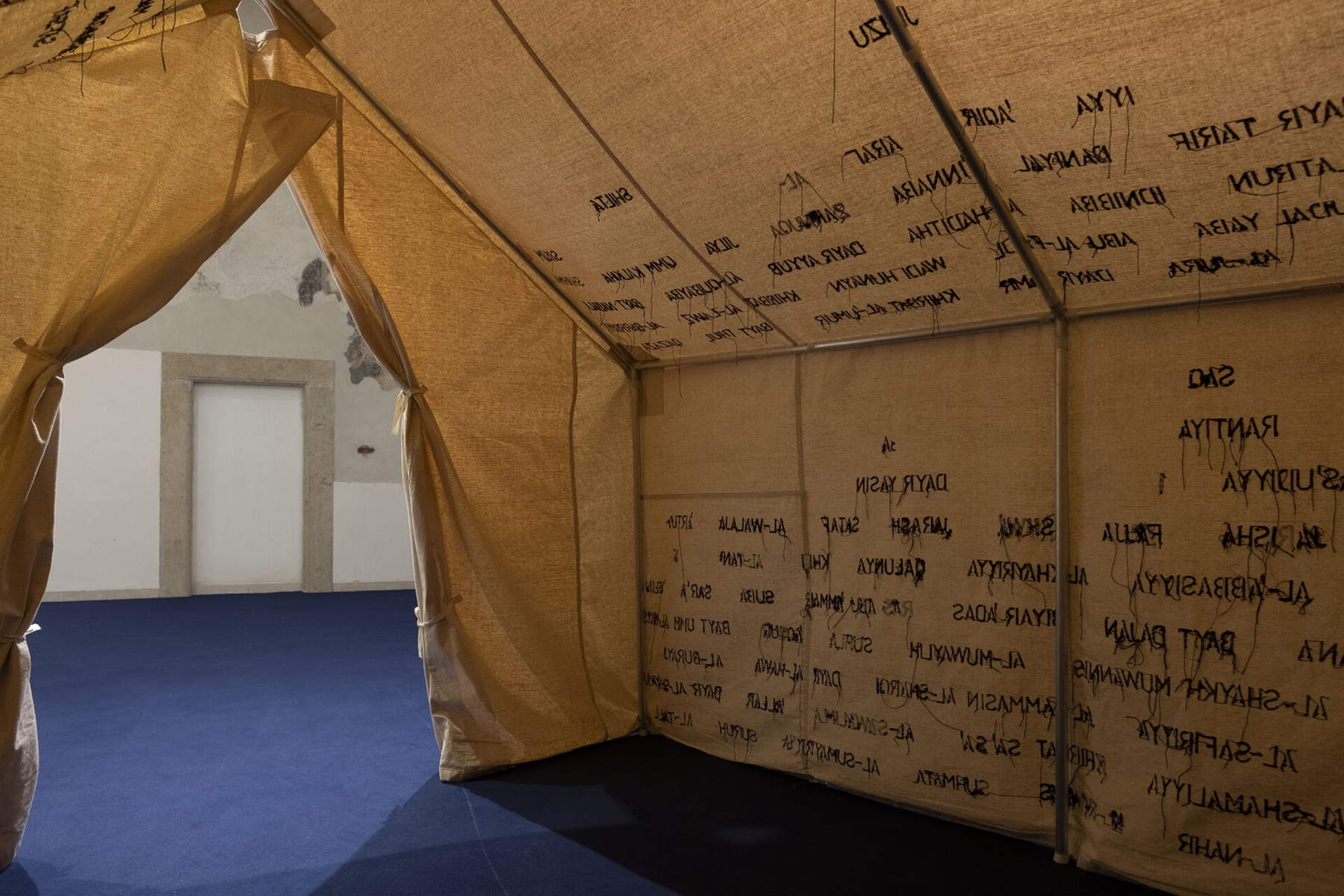
Instead, Dina Mattar focuses her research on the domestic dimension and family memory. Her works, with intense colors and fluid lines, depict everyday scenes from Gaza, often populated by female figures who embody the strength of private life in a precarious context. Her painting, influenced by Joan Miró, alternates between lightness and pain, rendering an intimate image of resistance. Both artists are also present in Brescia with works created during a residency sponsored by the Fondazione Brescia Musei.
The exhibition continues with works by Haig Aivazian, a Lebanese artist whose research addresses the mechanisms of power and surveillance in contemporary societies. Using video, installations, drawings and performance, Aivazian analyzes how control is exercised over bodies, places and objects. In Brescia, he presents the installation All of the Lights (2021), which explores the use of light as an instrument of power, and 1440 Couchers de Soleil par 24 Heures (2017/2021), a site-specific intervention that transforms the walls of the museum into a plaster grid dotted with magnesium lights, evoking the movement tracking systems and heat maps typical of crime prediction techniques(predictivepolicing).
The tour concludes with the works of Emily Jacir, among the best-known voices in contemporary Palestinian art. Her practice, which combines film, photography, sculpture and performance, explores the movement of people and memories across time and space. The installation Material for a Film (2005-ongoing) is one of the exhibition’s central works: a thousand white books, perforated by bullets, reproduce the gunshot wound with which the Mossad killed Wael Zuaiter in Rome in 1972. Each volume becomes a symbol of interrupted life and wounded memory, inviting the public to a gesture of collective reconstruction. Exhibited alongside it are Memorial to 418 Palestinian Villages Which Were Destroyed, Depopulated, and Occupied by Israel in 1948 (2021), a refugee tent embroidered with the names of Palestinian villages destroyed during the Nakba, and We Ate the Wind (2023), a video installation dedicated to the story of children hidden in Switzerland during the recruitment policies of migrant workers. Jacir’s works weave together identity, exile and memory, transcending geographical boundaries to reflect on universal themes of visibility and loss. The works on display come from international institutions and foundations, including the National Museum of Contemporary Art in Athens, the Sharjah Art Foundation and private collections in New York. Some were saved physically, others survive only in digital form, testifying to the fragility of cultural heritage in times of war.
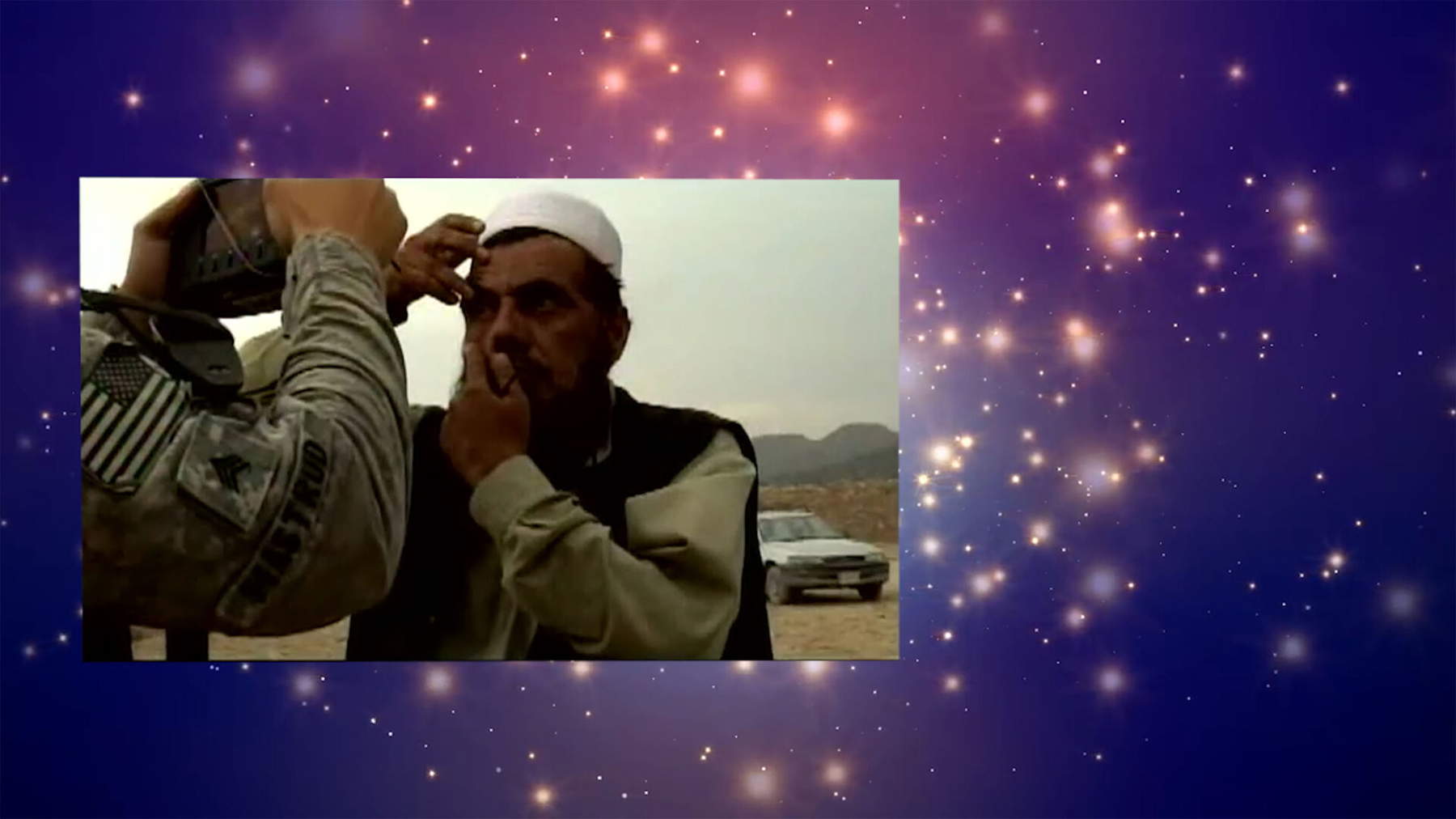


“Recreating in Europe what was destroyed in Gaza,” argues Roberto Rossini, President of the Brescia City Council, “appears to us as an important act of cultural diplomacy and an important signal of freedom. Europe’s true vocation, on the other hand, is peace in freedom and justice, precisely because Europe was born as a response of freedom and justice in the face of the horrors of war. Article 9 of our Constitution reminds us that the Republic promotes the development of culture: here in Brescia promoting culture has an international value and a value of peace. Thanks to Brescia Musei for the commitment it makes available to the festival every year and thanks to the artists present who, with the denunciation represented in their works, commit us to a civil and political responsibility that we must not shirk.”
"In the wake of the Review of Contemporary Art and Human Rights, launched by Fondazione Brescia Musei in 2019, the exhibition Material for an Exhibition, Stories, Memories and Struggles from Palestine and the Mediterranean, reaffirms the mission of the museum as a common good and space," says Francesca Bazoli, President of Fondazione Brescia Musei. “A public place of contemporaneity, in which artistic practice becomes an exercise of freedom and responsibility. In a time of reductionism and simplification, this exhibition invites us to pause in complexity, to recognize in art not only a reflection of the world, but its possible redemption.”
"With Material for an Exhibition, Stories, Memories and Struggles from Palestine and the Mediterranean," concludes Stefano Karadjov, Director, Fondazione Brescia Musei, “Fondazione Brescia Musei firmly renews the idea that museums are creatures endowed with subjectivity, in which the cultural project guides the interpretation on the material on display. Thus it is maximally evident in the ’art and rights’ cycle. Our institution, Fondazione Brescia Musei, has decided to orient itself toward generating a long-term social impact for the community and for our many guests, visitors, by mixing art, thought and citizenship, and it does so this year by interrogating visitors with the disturbing works of Al-Jawahiri, Mattar, Aivazian and Jacir from Gaza, Palestine and the Mediterranean. The art of our present becomes, in the Museo di Santa Giulia, the language to unite scattered places and memories, connect visible and invisible subtracted, overcome loss with rebirth. The Museum of Santa Giulia in Brescia as a public space, a place for open debate.”
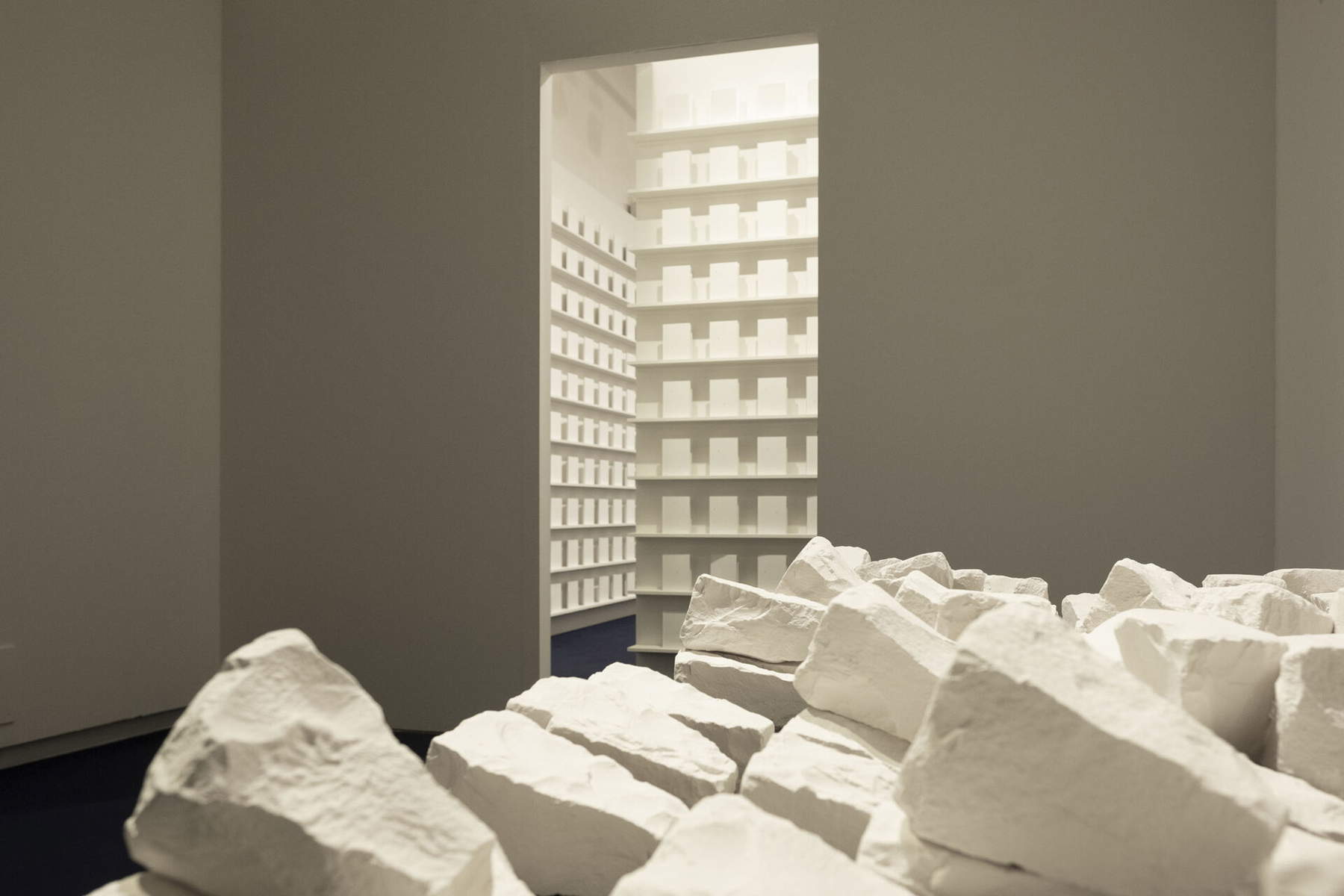
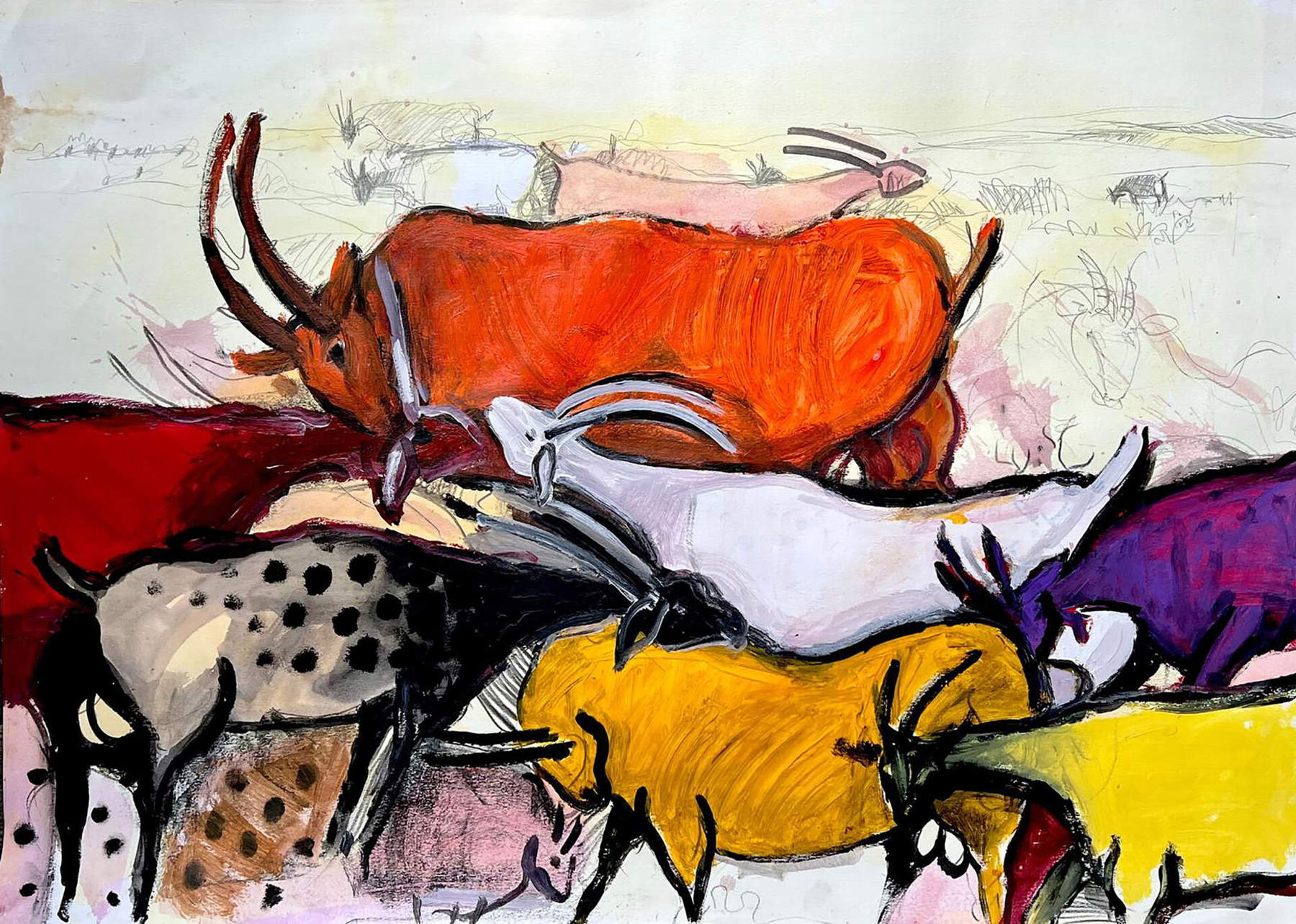
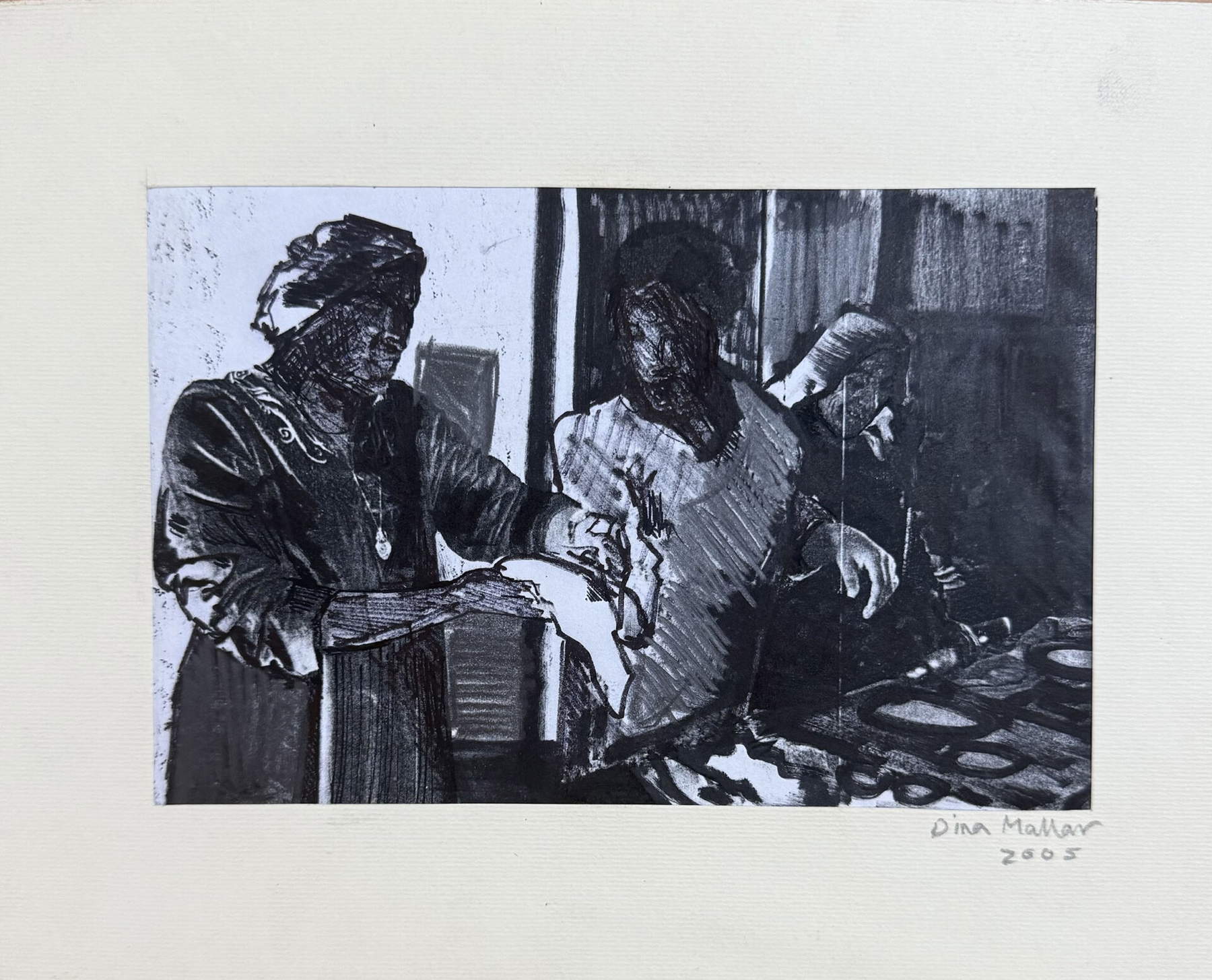
Parallel to the exhibition, Fondazione Brescia Musei is promoting a rich program of public activities. These include the Ask me project, which involves two inmates of the Verziano Prison House as guides for the public every weekend, and a series of meetings and screenings at Cinema Nuovo Eden. The opening, Saturday, Nov. 8, will feature a screening of the film Letter to a Friend by Emily Jacir, followed by a dialogue between the artist and the curator. The following days will feature documentaries and films related to the exhibition’s themes, including Qui vit encore by Nicolas Wadimoff, To a Land Unknown by Mahdi Fleifel and Put Your Soul on Your Hand and Walk by Sepideh Farsi.
Material for an Exhibition represents the sixth stage of the research path promoted by Fondazione Brescia Musei as part of the Festival of Peace, which since 2019 has offered exhibitions dedicated to contexts of conflict and denied freedom. Previous editions include solo shows by Zehra Doğan, Badiucao, Victoria Lomasko and Khalid Albaih, as well as the group show Until We Are Free (2023) dedicated to Iranian women artists. The exhibition is accompanied by a catalog published by Skira and a graphic design by the Liberink studio. In a historical moment marked by conflicts and migrations, the Brescia exhibition aims to be a space for listening and reflection on the role of art in preserving memory and keeping alive the dialogue between Mediterranean cultures.
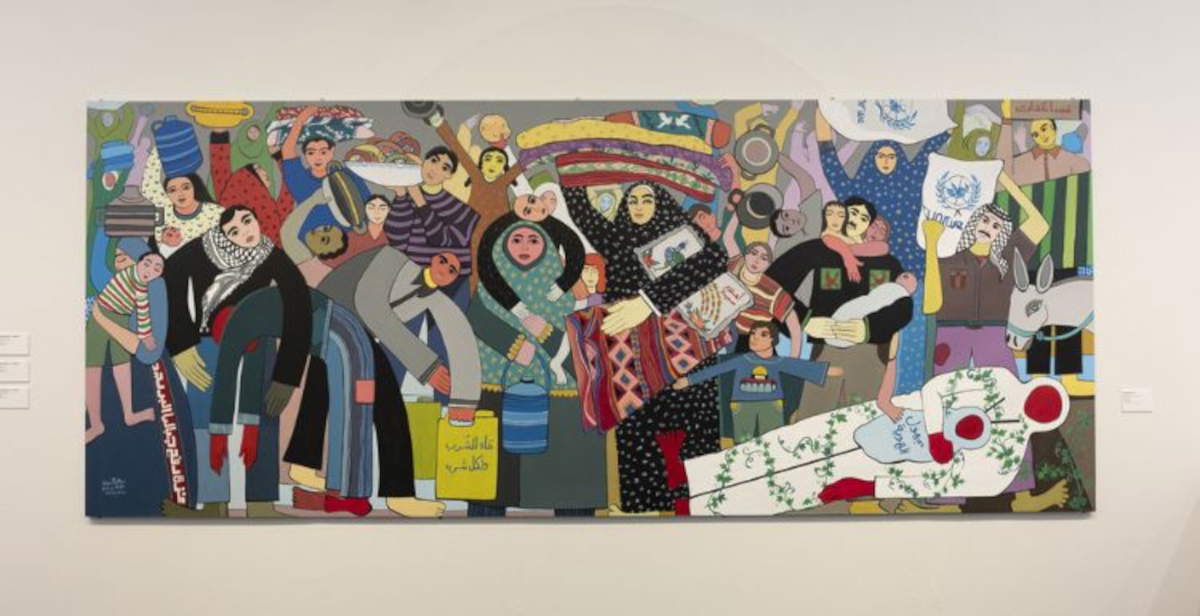 |
| Brescia, Palestinian collective Eltiqa's works that survived the bombs on Gaza on display |
Warning: the translation into English of the original Italian article was created using automatic tools. We undertake to review all articles, but we do not guarantee the total absence of inaccuracies in the translation due to the program. You can find the original by clicking on the ITA button. If you find any mistake,please contact us.